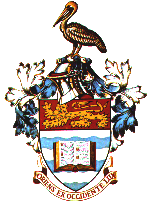![]()
![]()
![]()
![]()
![]()

![]()
![]()
![]()
![]()
![]()
This takes us on to drug resistance or drug-resistant mutations. Analysis of drug-resistant strains has revealed three general classes:
i) Strains that have become impermeable to the drug (uptake deficient);
ii) strains that have acquired an enzyme function which can degrade the drug as it enters the cell
iii) strains whose intracellular targets have become resistant to the effects of the drug.
Many drugs act by inhibiting essential enzymes or blocking the function of essential organelles such as ribosomes. Thus a comparison of resistant and sensitive strains often yields important information about how the enzymes or organelles function or how the drugs act.
For example, ribosomes from a streptomycin-resistant mutant of E. coli are found to contain a mutant version of the ribosomal protein S12. Its (S12) electrophoretic mobility is altered, as is its binding of the antibiotic. So the S12 protein in the small ribosomal subunit of E. coli has been identified as the target for the drug streptomycin.
Many mutations are lethal and this usually means that an active form of an indispensable protein cannot be produced by the organism. In haploid organisms, which includes most microorganisms, this means that mutations in indispensable genes must be isolated asconditional lethal mutations. Such mutations affect an organism's phenotype (leads to lethality) under restrictive growth conditions but not under permissive conditions.
The most widely used conditional variable is temperature and, for example, a conditional mutant may exhibit wild type phenotype at 37 C but fail to grow at 42 C. The wild type strain will be able to grow at both temperatures. Use of conditional mutants has been useful in studying the essential cell division cycle genes in yeast.
Strains sensitive to temperature increase are termed temperature sensitive (ts), while strains sensitive to temperature decrease are termed cold sensitive (cs).
Variables other than temperature can be employed to isolate conditional mutants, e.g. pH & salt concentration.
In diploid organisms the occurrence or indiction of lethal mutations is more difficult to assess. A dominant lethal which either kills the organism or prevents it from reproducing (a sterile mutant, non-hereditary mutation) can be readily detected. However, recessive lethals can only be detected from the progeny of two heterozygotes. This is because a recessive lethal (l) arising in the germ-line will not affect the original parent and is unlikely to affect the next generation as a gamete carrying the lethal mutation will probably fuse with a gamete carrying the dominant wild type allele (l+) producing a viable +/l heterozygote. Only when +/l heterozygotes are crossed may the lethal mutations be detected as 1/4 of the progeny will be inviable.
- will the inviable l/l be detected?
If the recessive lethal is sex-linked then such mutations are easier
to detect as a heterozygous female XXl will
produce only half the expected number of sons.
XX1
x
XY
XX
XlX
XY
XlY
i) Detection of sex-linked recessive lethals
In Drosophila special strains have been isolated for detection of recessive sex-linked lethal mutations. E.g. the Bar, apricot, scute (Basc) X-chromosome stock. Also known as Müller-5 strain.
- Bar (B)is a dominant mutation producing Bar eyes
- apricot (wa)
is a recessive mutation which gives apricot eye colour
- scute (sc) leads to reduction in bristles, but
in this particular mutant there is a chromosome inversion in this region
of the X-chromosome which effectively prevents meiotic recombination in
the X-chromosomes (recombination products are non-viable, more later).
Consequently, any progeny flies possessing bar eyes can be assumed to carry at least one Basc X chromosome (Bar is a dominant mutation).
The Basc X stock can be used to detect recessive sex-linked lethals in the following way:
Fig
- wild type males are mutagenised and crossed with females homozygous for Basc
- F1 females are collected as virgins and the F1 males discarded
- F1 females are individually crossed with wild-type males.
- Those females possessing an X-chromosome that carries a recessive lethal mutation can be identified by their distinctive male progeny. All of their male progeny will be Bar, aprircot. The females that produce only Bar, apricot sons can then be investigated and their non-Basc X chromosome analysed to determine the nature of the lethal mutation.
See also use of the ClB stock, also developed by Muller.
Remember I said that the Basc X and ClB strains in Drosophila contained inversions that prevented recombination in the affected chromosomes. There are two types of inversions:
pericentric - inversion of chromosomal DNA containing a centromere
paracentric - inversion not containing a centromere.
Fig of heterozygous paracentric inversion
There are two reasons for the suppression of recombination by inversions:
i) the looped configuration necessary for pairing at prophase I may discourage the establishment of chiasmata
ii) if a crossover does occur the chromatids involved in the exchange lead to nonviable recombinant fragments.
The dicentric chromatid resulting from recombination is usually broken during division and cells that inherit such broken fragments are usually not viable
- the acentric fragment cannot associate with the spindle and is lost from daughter cells.
Therefore only non-recombinant (parental) chromosomes are inherited and genes in the inversion are always transmitted as a group.
NB: there is no crossing over in male Drosophila.
This template created by the Web Diner.